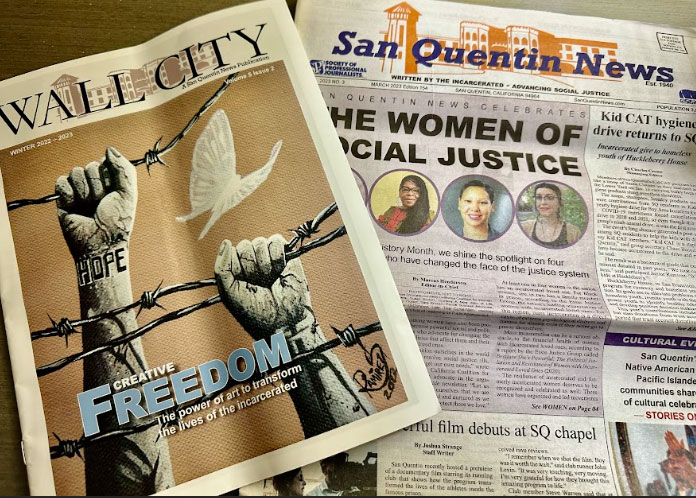They produce a newspaper, a news website, a magazine, a newsletter, a newscast and a podcast with more than eight million downloads. I am not talking about an ordinary emerging media conglomerate in the United States. It is the Media Center of San Quentin, the oldest prison in California. Located in the north of San Francisco, it had the largest death row population in the United States and now it is on its path to becoming a rehabilitation center, as the office of California Gov. Gavin Newsom announced last month.
For me, our four-hour tour in the prison was a whole experience, especially because it was the first time I visited a prison. But, without a doubt, visiting their media center was the highlight of that morning. This is what makes it unique newsroom:
- It felt like a real newsroom. Although none of the staff was a journalist before their convictions, they all studied journalism courses in the prison. Now, they introduce themselves as we do in every meeting, i.e., as editors, staff writers, designers and so on.
- The San Quentin News newsroom has no access to internet or a phone. So how do they work? Through advisers, most of them retired journalists, who provide them with news and research or serve as link between the reporters and interviewees outside the prison.

The San Quention Prison, in California
- The publisher of all the media they produce is the California Department of Corrections and Rehabilitation (CDCR) and everything is supervised by the Public Information Officer (PIO) of the San Quentin State Prison, Lt. Guim’Mara Berry. The incarcerated reporters told us they can be critical toward the authorities but “in a thoughtful way,” as Juan Haines, senior editor of Quentin News, put it. For instance, during the pandemic, they criticized the CDCR response to an outbreak in the prison. Twenty-eight inmates died of COVID-19, according to the inmates (the case is in court now). Also, the video team (Forward This) said the only story they got censored was a satiric representation about the pandemic in San Quentin.
- The official goal of the publications is the search for social justice, but the real aim of San Quentin News is to counter-balance the mainstream news. They want to “humanize the incarcerated,” because the mainstream media only defines them for their crimes, said Marcus Henderson, editor-in-chief of Quentin News.
- Their audience is also very particular: “we share what happens to the incarcerated Californians,” said Henderson. But they have managed to reach a broader audience. The best example is Ear Hustle, a podcast launched in 2017 that has surpassed eight million downloads, according to Berry. The podcast also was nominated for the Pulitzer Prize in 2020, which considered the podcast “a consistently surprising and beautifully crafted series on life behind bars.”
- The rate of recidivism of people who paroled from the Media Center is zero, a number both the staff of San Quentin News and Berry are proud of. Berry added that most of the people who worked in the newsroom generally find a job in the media when they are released.




